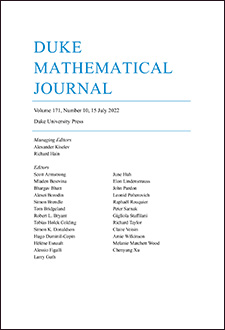Abstract
Let be a field finitely generated over , and let be a curve over . Fix a prime . A representation is said to be geometrically Lie perfect if any open subgroup of has finite abelianization. Let denote the image of . Any closed point on induces a splitting of the restriction epimorphism (here, denotes the residue field of at ) so one can define the closed subgroup . The main result of this paper is the following uniform open image theorem. Under the above assumptions, for any geometrically Lie perfect representation and any integer , the set of all closed points such that is not open in and is finite and there exists an integer such that for any closed point with .
A key ingredient of our proof is that, for any integer , there exists an integer such that, given any projective system of curves (over an algebraically closed field of characteristic ) with the same gonality and with a Galois cover of degree greater than , one can construct a projective system of genus curves and degree morphisms , , such that is birational to , . This, together with the case for (which is the main result of part I of this paper), gives the proof for general .
Our method also yields the following unconditional variant of our main result. With the above assumptions on and , for any -adic representation and integer , the set of all closed points such that is of codimension at least in and is finite.
Citation
Anna Cadoret. Akio Tamagawa. "A uniform open image theorem for -adic representations, II." Duke Math. J. 162 (12) 2301 - 2344, 15 September 2013. https://doi.org/10.1215/00127094-2323013
Information





